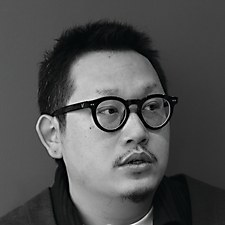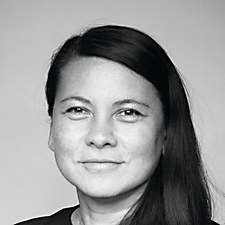When we first looked at the web in 1994, it was with Mosaic as a browser and a 14.4-kbps modem, and we couldn’t help but be disappointed by the lack of creative options and slow access speed. State-of-the-art disk-based projects were either on 1 MB floppy disks or slow loading CD-ROMs.
The impetus for the Interactive competition actually came about during the 1994 Design competition judging. All nine judges spent 30 minutes huddled around one computer to view the three interactive entries submitted. We still had 14,000 print entries to judge in less than three days and realized the whole system would collapse if we got more interactive entries in the future.
When we launched the Interactive competition in 1995, we had to send physical entries to the judges in three bundles over a period of six weeks because of the time-intensive nature of judging disk-based projects. First, waiting for a project to launch took up to several minutes depending on the hardware speed and how the project’s programmers decided to optimize the data loading; the more data loaded at the beginning, the faster the access time to various parts of the piece. The next hurdle was the introduction. Almost every project had a non-interactive introduction—some of the baggage left over from older mediums such as television or film. This could take from a few seconds to several minutes to view. More than one judge complained about sitting through a long introduction without the ability to bypass it to the interactive content.
Fast forward to today and, with the exception of branded experiences and museum exhibitions, almost every project is on the internet. In direct contrast to last year’s Interactive Annual, all of this year’s Best-in-Show winners are web- based projects. Another surprise was that no app-based projects were selected for inclusion.
When asked about their overall impressions of this year’s entries, several judges commented more on the content of the work and less about any technological innovations.
“I was pleasantly surprised to see so much playfulness, joy and humor in the work this year,” says juror Maria D’Amato, “less sadvertising; less trying to save the world with an idea that we all know is an awards play; and more honest, human expressions of fun. Let’s keep this trend going.”
“I was pleasantly surprised by the variety of projects and the topics they raised,” juror Viacheslav Olianishyn says. “From incredibly successful commercial projects to exhibitions to social projects—at such moments, you see that design has great power and can change the world.”
“The strength of the student pieces was a standout this year,” says juror Boo Wong. “I hope that many of their design product ideas are made real. I also saw a lot of humor in the work this year.”
I asked the judges what new technologies or trends became a dominant theme in this year’s entries.
“I was surprised to not see more entries pushing technological boundaries,” D’Amato says. “It seemed that folks were focused on crafting excellent experiences within known technologies rather than experimenting with new ones. I expect this will change dramatically in 2024.”
“This year’s superstar is AI,” says Olianishyn. “AI is everywhere. This is not surprising as this technology is changing the creative industry. But we also saw a lot of AR projects too.”
“I did not note any particular technology [as dominating], although I expect that will change for this year with the energy around AI in 2023,” Wong says. “A trend I did spot, however, was the use of big, bold design—strong, solid colors; original fonts; and clever ideas made better through design.”
I asked the judges what the weakest areas were in this year’s entries.
“Of course all the winners were great, but we also evaluated hundreds of other entries,” says Olianishyn. “Very often, we saw really impressive presentations of projects that were not done well enough. My recommendation is to spend more time on the quality of the work itself—the idea, typography and design. All this should be at a high level.”
“Social was one of the weakest areas this year,” Wong says. “It was hard to find well-designed and executed projects that were actually effective and not just marketing stories.”
I also asked the judges to describe the difference between a good project and a great project.
“Exceptional integration of intent and design,” says Wong.
“The difference between a good and a great experience is often the content,” D’Amato says. “The most beautifully designed site will fall flat if the story it’s trying to tell is jumbled, confusing or carelessly presented.”
“The magic is in the details,” says Olianishyn. “A great project is always something important, memorable and timeless. You should always remove [excess] layer by layer, and only after seven to eight layers will you reach a solution that you can call great.”
Looking towards the future, I asked what breakthroughs would be required for VR to finally become widely accepted.
“Miniaturization of components to enable a more comfortable form factor that can be worn for longer time frames,” Wong says. “And true AR, versus pass-through in standard VR headsets—the advent of consumer AR will change how we design for communication, utility and entertainment.”
Lastly, I asked the judges what impact they think AI will have on the process of interactive design.
“Huge! It’s going to be a game-changer,” says Olianishyn. “As designers, we must master AI as another of our tools, like Figma or Illustrator. Yes, it’s just a tool that will help us to make our work faster, help with content and copy, with idea generation, and with routine tasks. We must be open to change, not be afraid of being replaced and learn these tools as quickly as possible.”
“AI will speed iteration and scale and enable creators to make previously impossible things possible,” Wong says. “AI will fuel cross-disciplinary innovation—for example, by giving non-technical designers the ability of no-code development and wielding technologists with generative art.”
“AI will certainly simplify the design process,” says D’Amato. “Designers will be able to generate looks, UI elements and layouts more quickly. These will become the starting places, but no good designer will leave them as the end result. From there, my hope is that the time saved will be applied to crafting the narrative of an experience—something that is still a human endeavor.”
Selection for this year’s annual required a minimum of four out of six votes. Judges were not permitted to vote on projects with which they were directly involved; I voted in their stead. The winning projects, including links and case-study videos, can be viewed on our website at commarts.com. I would like to extend our grateful appreciation to our jurors for their conscientious efforts in selecting our 30th Interactive Annual.
In Memoriam
It is with deep sadness that I acknowledge the recent passing of several influential members of the creative community.
Burkey Belser, 76, was best known for his information design of the nutrition facts label that appears on all packaged foods in the United States, the EnergyGuide that appears on all major US appliances and the Drug Facts label that now appears on all over-the-counter drugs. Cofounder of Washington, DC–based design firm Greenfield Belser, he was also widely known for his pioneering work in legal adver-tising that earned him a Lifetime Achievement Award from the Legal Marketing Association as well as induction into that organization’s Hall of Fame. He was a judge for us in 2007.
Bob Dennard, 79, was a Dallas, Texas–based designer, illustrator, art director, copywriter and adman who utilized his multiple talents at Dennard Creative, Inc., and later as a partner in Dennard, Lacey & Wood. He was part of the all-star creative team at ad agency Stan Richards & Associates and helped define “the Dallas look” in the 1960s and ’70s. As a principal in his own firm, Dennard mentored several of the next generation of successful Dallas designers and served as an adjunct instructor for Texas Christian University and Texas A&M. He was a judge for us in 1992.
David Lance Goines, 77, was a graphic artist, calligrapher and printmaker whose posters, inspired by German Art Nouveau and Japanese woodblock prints, helped define the aesthetic of Berkeley, California’s counterculture—beginning with his 1971 poster announc-ing the opening of Chez Panisse, the artisanal French restaurant created by Alice Waters. Goines’s 1982 book, A Constructed Roman Alphabet: A Geometric Analysis of the Greek and Roman Capitals and of the Arabic numerals, won the American Book Award for typography in 1983, and his posters are in the permanent collections of numerous museums. We published a feature article on his work in 1977.
Helen Marcus, 97, was a prolific photographer of literary figures and film and television personalities in the book and magazine publishing field. A television producer from 1955 to 1974, Marcus switched to photography full-time, and her work was soon appearing in Forbes, Gourmet, the New York Times and TIME magazine. A champion of her fellow professionals, Marcus founded the New York chapter of the American Society of Magazine Photographers (later the American Society of Media Photographers) in 1982 and served as its national president from 1985 to 1990. She was a judge for us in 1987.
Miranda Moss, 81, cofounded the Minneapolis-based brand design firm Seitz Yamamoto Moss in 1979 with partners Peter Seitz and Hideki Yamamoto. Renamed Yamamoto Moss in 1986, the firm grew under her leadership to 110 employees with satellite offices in Miami, Florida, and Shenzhen, China. Moss served on the boards of the Design Management Institute and the Minnetonka Center for the Arts and was honored twice by the National Association of Women Business Owners for her entrepreneurship. As she was an accom-plished artist, Moss’s paintings can be found in corporate and private collections in the United States. She was a judge for us in 1992.
George Tscherny, 99, was one of the leading corporate designers in the 1960s, but his use of humor and humanity differed from the austere Swiss style utilized by many of his contemporaries. After working for design studio George Nelson & Associates, Tscherny opened his own practice in 1955, creating advertising, logos and annual reports for numerous major corporations. He was inducted into the Art Directors Club Hall of Fame in 1997, was a member of Alliance Graphique Internationale and taught the first graphic design course at the School of Visual Arts. We published articles on Tscherny in 1962, 1966 and 1969, and he was a judge for us in 1983. —Patrick Coyne ca

Maria D’Amato is executive creative director at Austin, Texas–based agency GSD&M. With a simple philosophy—to be ahead of what’s happening at the forefront of technology and design—D’Amato has played an integral role in establishing experience design within GSD&M shortly after joining the team and has since been a formative partner to clients like Lennox, Southwest Airlines and the United States Air Force, among others. She has won numerous awards from Addys, the Art Directors Club, Awwwards, Cannes Lions, Communication Arts, CSS Design Awards, FWA, New York Festivals, One Show, Webby Awards, and was named on Adweek’s Creative 100 list in 2022.

Lauren Kimball is vice president, design director of Momentum Worldwide in New York. Having started her career in sports and entertainment architecture, she focuses on the development of connected experiences and design strategies for notable clients including American Express, Coca-Cola, the NBA and the NFL. Kimball has created bespoke experiences for artists like Jack Harlow, Alicia Keys, Lizzo and Pharrell. She has led interdisciplinary teams through the design of Olympic master plans, music festivals and immersive game design. Her award wins include Clios, Effies, The Ex Awards, and having Momentum Worldwide named Adweek’s Experiential Agency of the Year in 2022.

Fang Liu is the founder of Koikreative, a Beijing, China–based creative agency involved in digital marketing and interactive solutions for fashion brands. Having received a BA from Beijing Institute of Fashion Technology and an MA from the London College of Fashion, Liu worked in the digital marketing departments of Vivienne Westwood and Karl Lagerfeld before establishing Koikreative in 2014. He is the recipient of awards from Awwwards, Communication Arts, D&AD, FWA and Red Dot. Liu is also a guest lecturer and postgraduate tutor for the Beijing Institute of Fashion Technology and director of the opening ceremony for Beijing’s 751 International Design Week.

Viacheslav Olianishyn is a founder and art director of Obys based in Kharkiv, Ukraine. Focusing on creative web devel-opment, interaction and graphic design, Olianishyn received a master’s degree in print and design from the Kharkiv National University of Radio-electronics and has created work for Air Singapore, CNN, Ernst & Young, Perrier, Porsche, Samsung and Under Armour. Obys has received recognition from Awwwards, Communication Arts, CSS Design Awards, FWA and Webby Awards, and was named Studio of the Year by both Awwwards and CSS Design Awards. Olianishyn has also served as an education mentor for the Awwwards Masterclasses.

Martijn van der Does is executive creative director and founder of Wonderland (code d’azur) based in Amsterdam, The Netherlands. van der Does studied media and communication at Amsterdam University of Applied Sciences and design at Shillington College in London. Prior to founding Wonderland in 2015, he worked at JWT and DDBTribal. van der Does has won numerous awards from ADCN, Awwwards, FWA, Lovies and Webby Awards and has judged or spoken at Awwwards, Lovies and Webby Awards. He is also the founder of Sustainable Digital Design, a platform for digital sustainability insights from industry experts and design communities.

Boo Wong is the former director of live entertainment for Unity Technologies and was previously computer graphics and creative director at Curious Pictures, executive producer and head of production at Psyop, and global director of emerging technology and cofounder of experience at The Mill. Wong has a 20-year history of leading global teams forging design and emergent technologies into new business lines and products for the most prominent brands in the world. Her work has earned accolades from Art Directors Club, Association of Independent Commercial Producers, Andys, APA, Cannes Lions, Clios, D&AD, Graphis, One Show, Oscars, Siggraph, Sundance and Webby Awards.